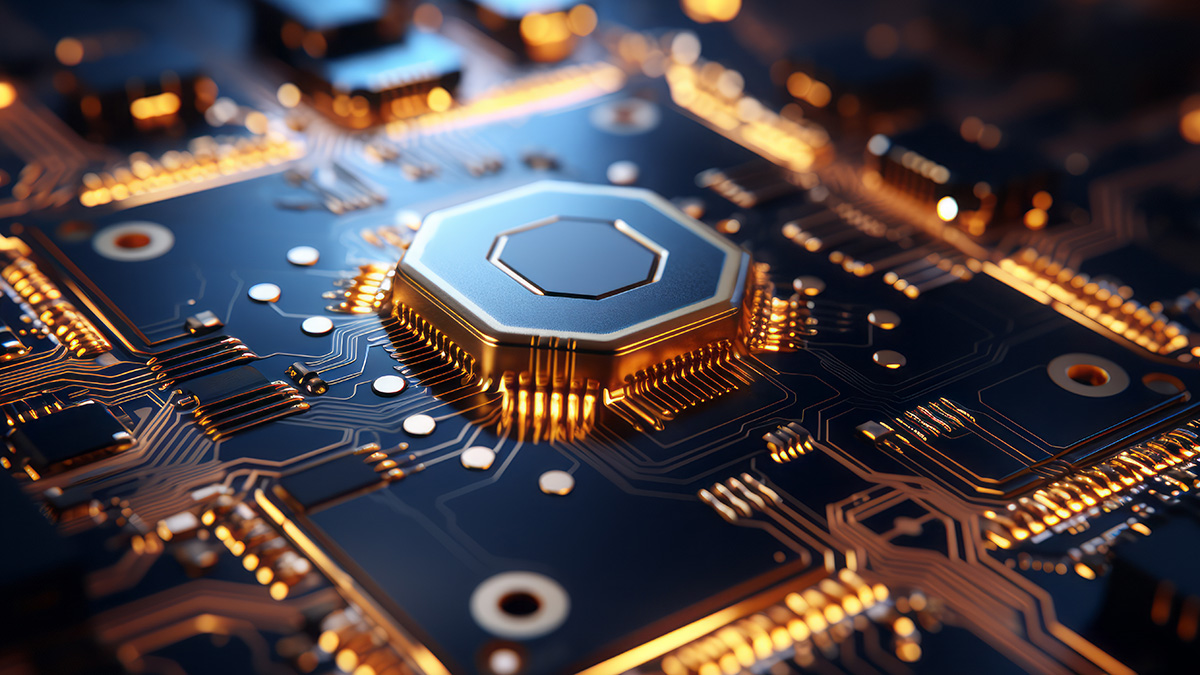Magnetic random access memory ( MRAM ) has become a crucial technology.
IoT includes connected electrical systems that are essential to the manufacturing of automobiles, energy, agriculture, and other intricate business sectors. A continuous influx of data from sensors and localized processing units is produced by these systems advanced functionality, which includes high-speed connectivity, AI-driven decision-making, and ongoing monitoring for optimisation and maintenance.
Thus, the IoT efficacy depends heavily on a method of trustworthy, secure data capture, which places strict requirements on the memory design of control systems. Strong memory solutions are needed to manage factory line configurations, sensor data, and machine health monitoring for programmeable logic controllers ( PLCs ), which are essential for automation in factories and control centers.

MRAM: What is it?
Due to their programmability and scalability for handling between hundreds and thousands of IO devices, PLCs offer high flexibility for factory processes when controlling actuators, sensors, and other types of input/output ( IO ) devices in factory automation applications. These systems must operate over a broad temperature range and be protected from vital system data in the event of power outage in order to be tough. PLC design calls for a non-volatile memory ( NVM ) that maintains data when power is lost or interrupted because customer line configurations and system state information must be protected and instantly retrievable under any circumstances.
However, the memory must be non-volatile in addition to being able to withstand frequent updating and store data for extended periods of time at higher temperatures. Due to its special combination of properties—including strong access times, large write cycle endurance, and long data retention—MRAM is the memory of choice for PLC manufacturers.
More precisely, the main characteristics of MRAM include:
- Data storage for at least ten years at temperatures of 105°C.
- Over the course of the customer system, nearly endless writes.
- byte-level addressability, symmetry read and write speeds, and access times.
- The most recent professional MRAM has read and write bandwidth of 400 Mbytes.
- -40C to 105C is the professional operating temperature range.
Why use MRAM?
MRAM has been used by PLCs for more than ten years. Its popularity is growing as a result of its advantages over other memory devices. Because they work with common bus interfaces, both horizontal and prolific, MRAMs provide design flexibility and are compatible with both SRAM and common NOR devices. Because there is no need for physical capacitors or batteries to maintain power to the device in the event of power loss, MRAM’s design is also made easier by its natural non-volatile nature and extremely high endurance. This makes it possible to design the system’s power, loss, and protection much more simply.
Due to MRAM’s large endurance, it is not necessary to control the frequency or locations of writes in the memory device, as is necessary for NVMs that are flash-based. Additionally, the fairly new xSPI JEDEC serial interface standard is used in innovative MRAM models, which further simplifies use and standardization for system designers.
Another NVMs have restrictions that MRAM does not. Here are a few illustrations.
Because of a highly complex memory storage cell that depends on both SRAM bit cells, which are supported by Flash-like cells and nonvolatile static RAM ( nvSRAM ), it is not scaling to higher densities.
Although NOR Flash can handle the volume of writes required for system monitoring, it is good for code storage that does n’t require frequent updates.
Although battery-backed SRAM ( BB-SRAM ) offers good read and write speeds, PLCs are less likely to use it because it requires a battery to store data in the memory when power is lost. A BB- SRAM system is susceptible to downtime or field replacement problems because batteries are frequently uncertain and later need to be replaced.
A boost for Edge AI
A new trend is the use of AI in process automation, and systems are currently being developed that use AI for inference and machine learning. A committed accelerator that will perform inferencing within a system to provide interpretation and optimization of process conditions, predicted maintenance, or camera recognition is frequently used to process AI processing. There is an advantage to performing the acceleration function directly rather than in cloud-based systems because these systems are frequently at the edge or far edge of the network.
Rapid, localized optimisation is made possible by edge Artificial processing in control systems, which lessens the need for cloud-based data centers. MRAM is the perfect memory solution for the energetic needs of IIoT due to its adaptability, nonvolatility, and endurance for continuous writing. It facilitates regional model storage, fast updates, instant-on capabilities, and extremely quick writes to speed over-the-air updates and system feature additions, all of which are necessary for adapting to changing customer demands. System designers now have a variety of options to accommodate different memory workloads in the professional domain thanks to this technological advancement, which enables flexible deployment within the memory hierarchy.
Versatility for a variety of professional IoT applications
MRAM can be optimized for particular system memory workloads thanks to its extreme versatility. MRAM is optimized for write-cycle endurance of 1e14 cycles as nicely as extremely rapid write speed because it is a frequent data memory that stores descriptive, configuration, or system logs. The MRAM can be optimized for higher capacity and trade-off between write speed and cycles in the case of a consolidated code and data storage memory. As a distinct memory component, MRAM is generally not customized, but the memory’s design can be optimized for the workload and keep the system using standard interfaces.
Everspin has observed the widespread use of MRAM in commercial applications. The Siemens Simatic MP 277 and MP 377 Multipanel Machine Control Systems, Advantech PCM-23 Series Industrial Computing, Emerson Network Power’s MVME7100 Industrial Computer Board, and Schneider Electric Modicon M580 Automation Controller are just a few of the examples given below.
In addition to process control, MRAM is used in the infrastructure of bright cities in a variety of integrated applications, including solar power inverters, building lighting controllers, energy train drivers, and ticket machines. As AI puts more demands on memory systems, the future is promising for the development of MRAM in the IIoT.











